How to draw lily of the valley pencils and watercolor.
Content
- Lily of the valley: drawing in pencil in stages
- Lily of the valley drawing for children
- Lily of the valley drawings in watercolor
- Video: Lily of the valley from nature
You can paint lily of the valley with a simple pencil, watercolors, or use gouache. Learning to draw, especially delicate colors, will relieve stress and inspire the creation of a whole series of floral designs.
And if your child suits you and asks you to draw flowers with him, then you will be interested in him. After all, the process of drawing flowers is fascinating both for adults and for children.
The main thing is not to start with too complex pictures. Try to begin with drawing in the technique of graphics. Work on the clarity and accuracy of the lines. Look how plausible are the painted buds of
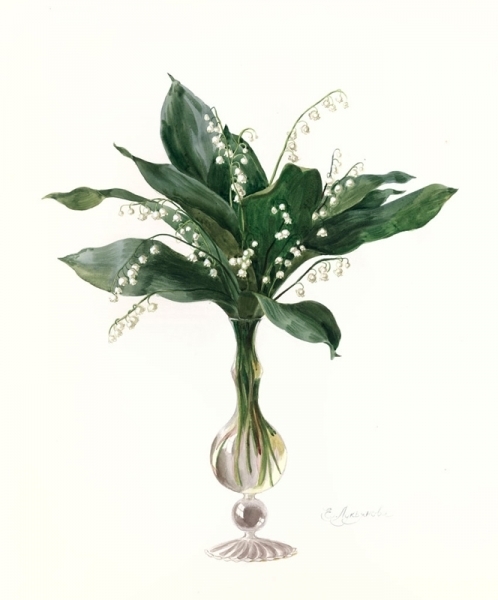 . The lily of the valley looks like watercolor
. The lily of the valley looks like watercolor . Lilies of the valley on vintage postcards.
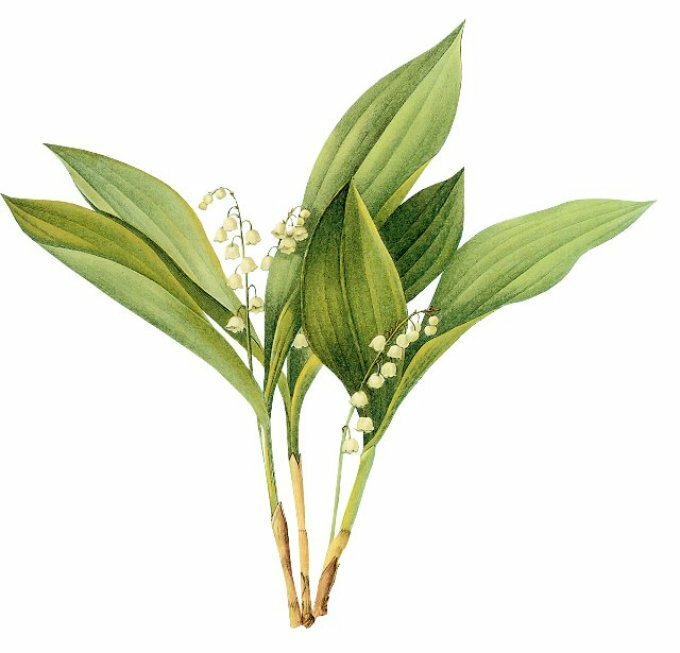 . Bush of lilies of the valley.
. Bush of lilies of the valley. 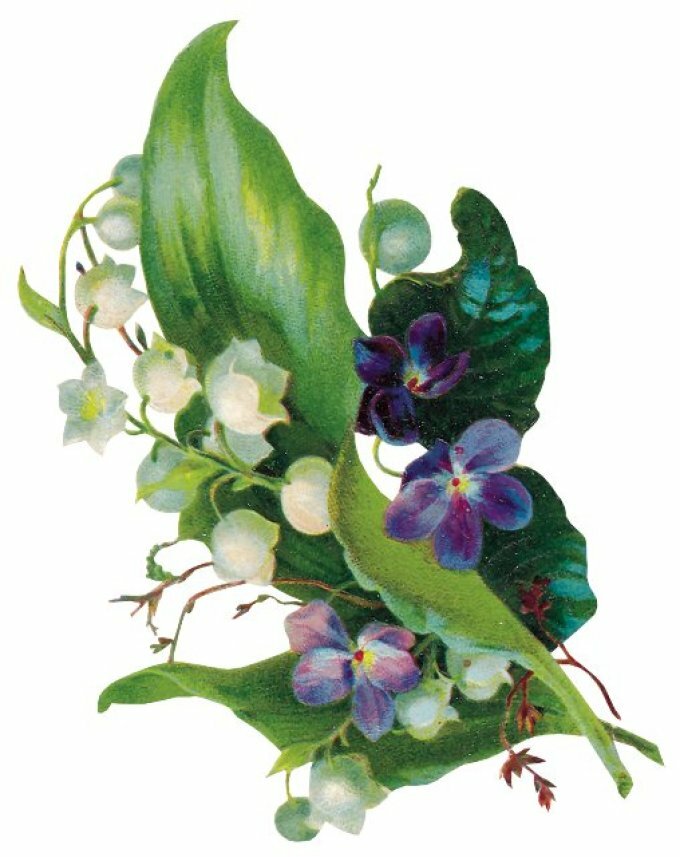
 . Luxurious bouquet.
. Luxurious bouquet. . Lily of the valley: drawing in pencil in stages.
. Making monochrome drawing is the best way to learn how to draw lilies-of-the-valley. On the drawing of all the details on the leaves and buds does not take much time. The drawing uses a single color - green
Look at the bouquet of lilies of the valley and study the shape of the leaves.
 Lily of the valley leaves broad
Lily of the valley leaves broad Try to transfer to paper the image of a single lily of the valley lily. If everything worked out, proceed to drawing a bouquet of
. To draw a lily of the valley with a pencil, you should buy special paper for graphics. Watercolor paper is not intended for such a pattern.
Stages of drawing a lily of the valley
The first stage of the
- begins the drawing with a drawing of the future boundaries of the image: draw the horizontal and vertical lines that form the rectangle. Inside it you will then draw lilies of the valley
- , then you need to work on drawing a branch of a lily of the valley. Do not press strongly on the pencil( just touching the paper lightly), mark 3 arcuate lines with a slight slope to one side. These are the future stems on which the buds of
- will be depicted. One of the lines will gradually thicken, narrowing to the top
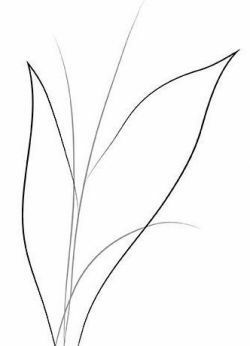 Drawing of stems and leaves
Drawing of stems and leaves Stage two:
- we begin to paint the leaves. There must be three. The leaves must fill the drawn early rectangle. We arrange them in different places, changing the size, bending, and avoiding the symmetry of
- we carry out two more lines, remembering that the shape of the leaves in the lily-of-the-valley is elliptical in form: they are narrowed from above. The lily of the valley lily-of-the-valley is leaves and buds on arched stalks. Each leaf is divided into two halves by an arcuate line. Add streaks. They should be a lot of
- again go to the stems. We left two lines, which should be drawn more carefully. We thicken the lines upwards, making them look like stems
Stage three:
- we start drawing buds. We plan circles of a place where flowers will be located on a stalk
- . How to draw buds? From the underside of the future flower we draw a wavy line - the skirt of the bell
- of denticles on buds can be 3 or 4.On each side, the edge of the undulating line is lifted upwards. Inflorescences should resemble sleeves-lanterns. It is better to direct them in different directions
 How to draw a lily of the valley lily of the valley
How to draw a lily of the valley lily of the valley 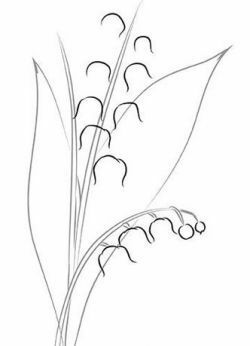 Adding buds
Adding buds - Draw a few strokes of the area inside the buds. Each bell is attached to the stalk by small line-shoots. At the top of each stem, you can draw tiny unbroken buds
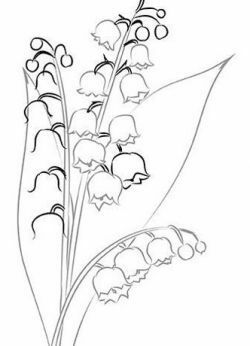 Upper buds small
Upper buds small We prepared the sketch of the lily of the valley. It remains only to erase all the auxiliary and unsuccessful lines of the
with the eraser. Step Five:
- further we need soft pencils. They will give the lily of the valley bush volume and make them more realistic. Shadows on the underside of the leaves
- add shadows with a soft pencil and inside each bud-bell. You can perform hatching crosswise or simply hatch in short lines diagonally
- came the turn to perform partial shade. To do this, use a hard pencil. The brightest areas of the lily of the valley are left unshaded
- if you draw a lily of the valley carp with black ink, then the volume and penumbra are attached, observing the same principle. The most shaded areas are painted black and the illuminated areas with lighter tones, gradually moving to areas that can not be covered with mascara.
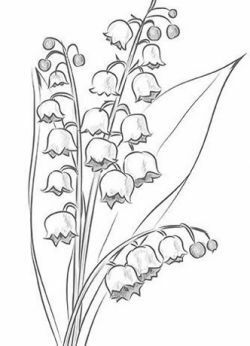 Ready drawing
Ready drawing  A lilac bunch of flowers can be drawn and so
A lilac bunch of flowers can be drawn and so 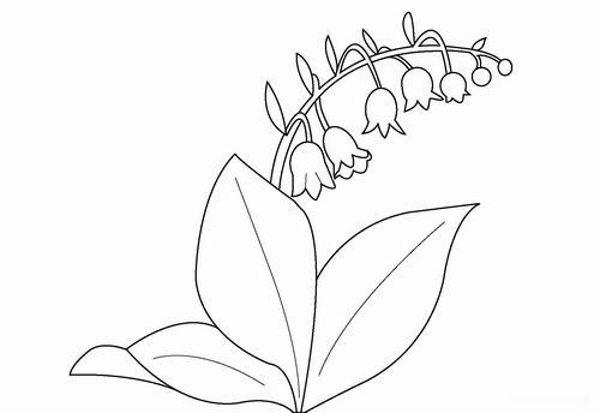 Or so
Or so You can draw a picture with colored pencils. To do this, draw a sketch of a lily-of-the-valley bush, observing the same sequence as when drawing with a simple pencil.
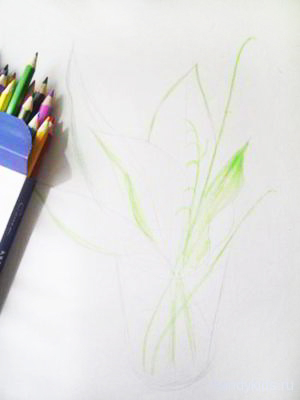 . Drawing with colored pencils is performed in the same sequence.
. Drawing with colored pencils is performed in the same sequence. . And then everything is simple: coloring the leaves with a bright green color, adding yellow and blue, denoting the edges of bluebellspencil
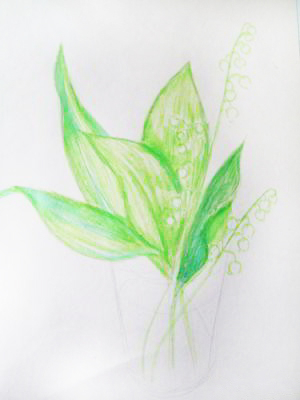 Green leaves
Green leaves 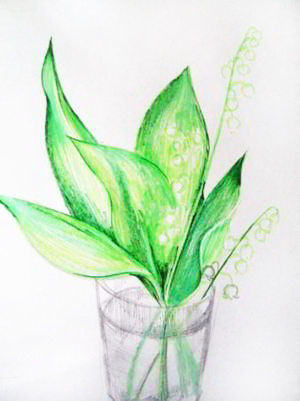 Drawing shadows
Drawing shadows Shadows are painted in blue. With a napkin or cotton swab we shade the shaded areas. Strengthen the effect by brushing the darkest areas. Three-dimensional drawing will give the drawing of the outer borders of the picture in some places stronger and brighter
 Ready drawing
Ready drawing Darker areas are working with pencils darker. If the inflorescence ends with berries, then they are colored orange or red. Again, add shadows and penumbra.
Lily-of-the-valley drawing for children
With children, a drawing of a lily-of-the-valley bush can be performed differently. Having shown zeal and attentiveness, children can as a result receive a beautiful and correct drawing, which can be presented to the mother or grandmother.
Children's drawings with lilies of the valley can decorate the wall in school. Then it will also please the eye in the winter and remind you of the warm summer days of
. Children can be offered a bouquet of lily of the valley. A lot of leaves should not be drawn: in nature, 3-4 leaves are kept on one stem. It is worth explaining to the guys that the lily-of-the-valley flower is a cup. It has a curved wavy edge
On one branch of the lily of the valley there are about 10 flower bells. They can be opened, and they can look like immature little buds. Bells are smaller than the top of the stalk of the lily of the valley. Bells are bells
 Buns are circles
Buns are circles 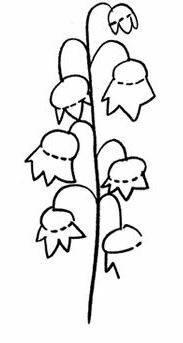 Drawing of bells
Drawing of bells 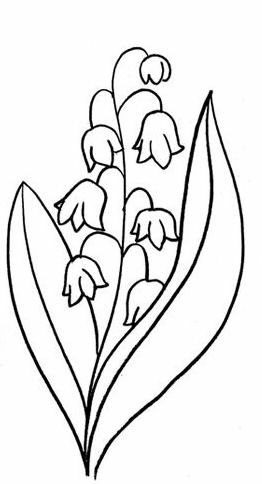 Completion of drawing
Completion of drawing It will be much easier for children to make a stylized drawing of one branch of a lily of the valley
- leaf with a bend
- add to the leaf inflorescence: draw another arc-shaped line
- bell drawingWe begin the lily of the valley with the upper arcs. The bottom edge of each bell is drawn with a wavy
- again adding arcuate short lines, connecting bells with a stalk
- on a leaf, we draw veins with lines at an angle. Such a picture can be left untouched, or you can use the same green and blue colored pencils
Lily of the valley drawings with watercolor
A drawing of a lily-of-the-valley lily-of-the-valley made by watercolor will let you transfer all the softness, lightness and weightlessness of the
. Draw better on a sheet of watercolor paper: it has a dense structure andbecause it does not deteriorate when interacting with water. Ordinary paper can become dehydrated and the drawing will look untidy.
Before drawing, the sheet must be secured with adhesive tape around the edges. It is desirable that the tape was glued with straight lines. At the end of the work, the area pasted with adhesive tape will serve as the frame
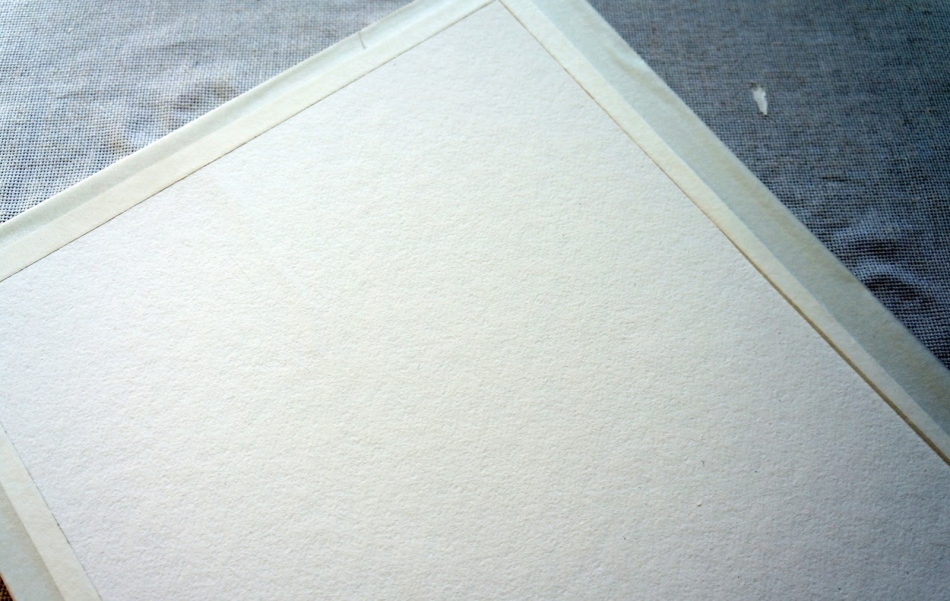 Fastening the sheet with adhesive tape
Fastening the sheet with adhesive tape First, draw a sketch of a bunch of lilies of the valley with a simple pencil. Remember that the long and broad leaves narrowed to the top
- We conduct the lines easily by touching the paper: thick lines will be difficult to erase, and when covering the paper with paint they will still be viewed.
- When drawing with watercolor, the main thing is not to overdo it when applying a paint layer. Diluting the watercolor with water and applying the technique on a dry basis, it is possible to achieve transparent air shades
- The leaves should be painted in the wet technique: on the watered area we apply colorful layers of light yellow and green watercolor. In some shaded places, add blue. We use for this purpose a mixture of blue and violet paints
- The dry technique consists of a layered application of paints to a certain area of the drawing. Only watercolor paper will allow you to do it accurately. Outline the background around the lily of the valley in blue
- Water should not fall outside the boundaries of the sketch drawn by the pencil. Otherwise, the pattern will flow and lose its clear outlines
- Only the water-soaked area of
 is stained. The process of drawing lilies of the valley with watercolor paints
is stained. The process of drawing lilies of the valley with watercolor paints To get a beautiful picture, use as many colors and shades as possible by mixing the colors on the palette. Remember how the lily-of-the-valley flowers look under bright light: a mix of
- shades occurs. The shaded areas on the leaves can be bluish-green. The illuminated area can have areas of bright yellow color. The bells of the plant are also not colored with a homogeneous white color. In the shade, the flowers acquire a cool blue or violet shade of
- . When the process of applying the primary colors is completed, the pattern should be left for a time to completely dry. This process can be speeded up using the
- hairdryer. At this stage, if mistakes were made or the paint went beyond the sketch, everything can be straightened out. To do this, the paint is washed off with a water jet
- After the pattern dries completely, the finishing line comes on: the color of the darkest areas is deepened and the fine details are drawn
- It's easy to sprinkle the white paint on the drawing
